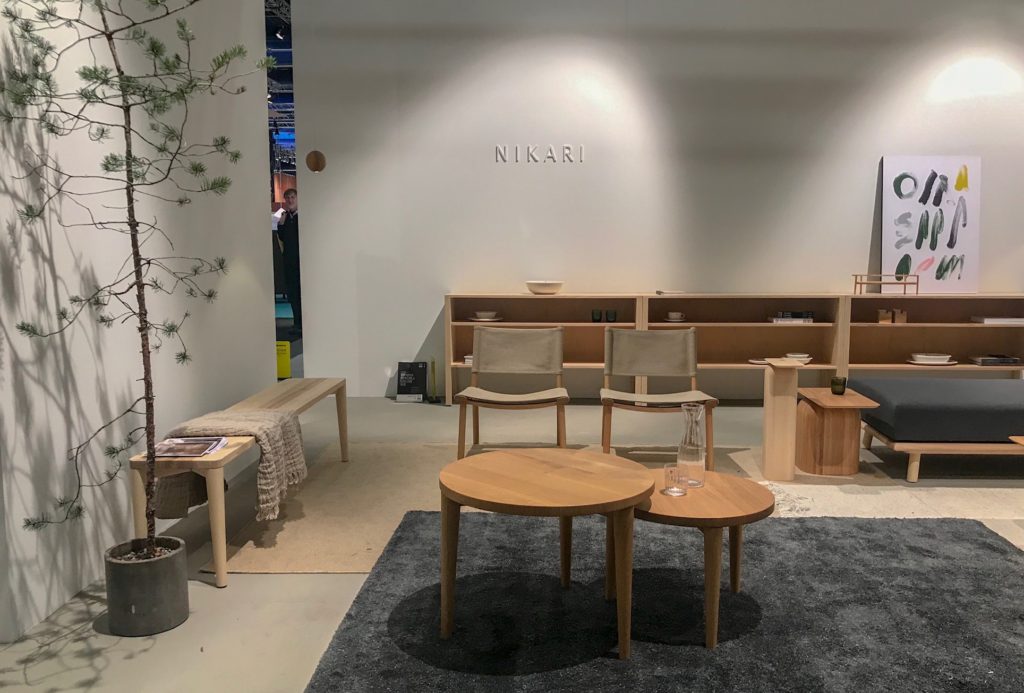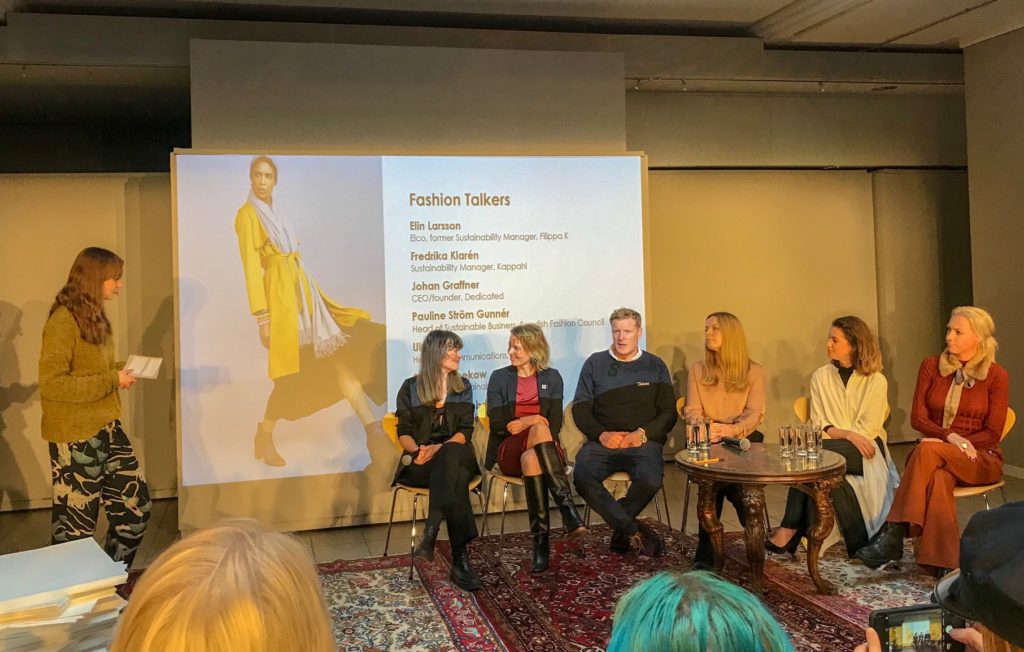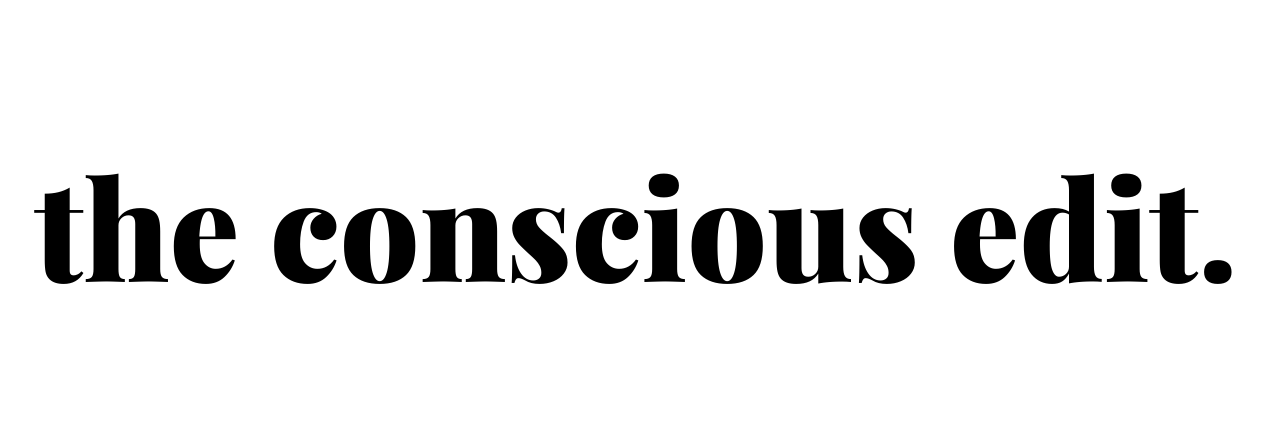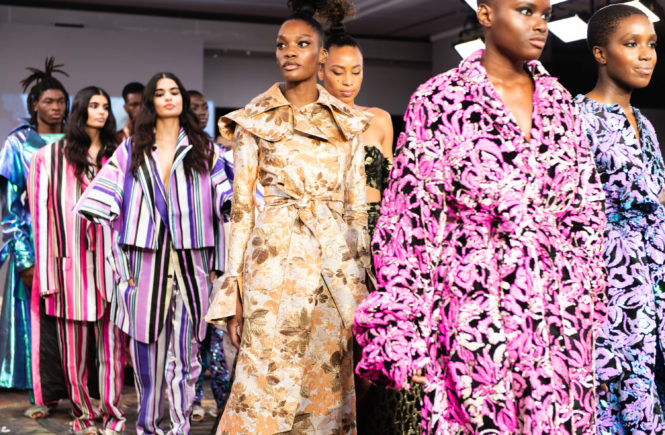We’re in the middle of fashion weeks in the fashion capitals around the world and in Stockholm we recently had Stockholm Design Week that included fashion shows, talks and events as well as Stockholm Furniture & Light Fair.
They’re there for brands to have somewhere to showcase their new products. But for us as consumers, and for the narrative around trends and conscious consumption – are the trend weeks and fairs, actually, un-trendy?
How to engage with new trends?
Fashion weeks are still taking place twice a year to present Spring/Summer and Autumn/Winter collections, but the time of two collections a year are long gone. Instead, we’re seeing new lines coming out most weeks from the fast fashion brands and we’re seeing a constant flow of new trends.
How do we relate to and engage with new trends when they’re coming at us all of the time? When we’ve barely had time to explore one trend until we realise it’s out and there’s something else that’s come in to replace it?
Probably not very well. For the simple reason that we don’t even have time to figure out if it’s a trend we like, and therefore should invest in. And even if we do, we’re made to feel out of trend as soon as new trends are released.
Trends at the fair
I visited Stockholm Furniture & Light Fair the other week and even though there was much I enjoyed, it also got me thinking about the concept of trends. Mainly because of the reason that I found the ‘trendy’ exhibits rather uninspiring. And the ones presenting traditional, timeless craftsmanship were the ones I enjoyed the most. Wood work by furniture-making students, neutral colours and quality pieces that will last through the years. My favourite stand was the one below by Finnish Nikari.

One can of course argue that this is also a trend. That we’re currently enjoying natural materials, produced in a sustainable way, but that this will also pass. I feel it’s slightly different to the usual trends though. Because the brands are talking about long-term solutions and changes to production rather than just something for now. And the narrative is different. Because they talk about how they’re creating things that will last and that we’re meant to enjoy and keep for a long time.
What role can the fashion weeks play?
The interest around fashion weeks has definitely peaked and gone downhill in the last few years. We consume fashion differently, and we consume media differently. So the hype around fashion shows, and the subsequent reporting on the most important trends by the fashion magazine editors, isn’t the same. Because social media means we can follow the events live and influencers report on their favourite picks in real time, and anyone can watch.
As the speed of how we live and consume increases, one can also question the concept of showcasing fashion for next season when consumers these days are used to buying things right away. Are the fashion weeks therefore better off focusing on ‘just’ inspiration as well as potentially broadening its focus to cover the industry as a whole rather than just trends they see being popular later in the year?
The fashion weeks can most definitely be used as platforms. To not just present new things we should all be buying. But to raise issues in the industry as well as innovations and inspiring ways of doing things.
Shifting the focus
There has been changes in the last few years. As the concept is questioned and as sustainability has (finally) been added to the agenda. Neonyt has been established as the trade fair for sustainable fashion at the Berlin fashion fairs, Helsinki Fashion Week has banned fur, and since 2009 Copenhagen has hosted Copenhagen Fashion Summit, not as part of the Fashion Week but as its own conference with sustainability at its core.

The London Fashion Week hasn’t come as far and climate change demonstrations disrupted some of the shows last week to highlight the extreme pollution created by the industry. But some designers used the stage for a bigger purpose and my favourite was Mother of Pearl, in collaboration with BBC Earth, presenting their sustainable fashion in Fitzrovia Chapel amongst a load of (recyclable) balls to highlight the amount of plastic and microplastic used in fashion (see pic above).
During Stockholm Fashion Week earlier this month I went to a talk (below) on how the Swedish forest can be used to create a more sustainable fashion industry. By taking advantage of the fact that we have this great natural resource that is renewable and can produce various types of fabrics by using the cellulose. An informative session with a good discussion on the responsibility of brands, industry organisations, as well as consumers. I would of course have been interested in this session even if it had nothing to do with Stockholm Fashion Week but that may not be true for everyone else. And if these discussions can be brought to the core of the industry, and to a wider audience, then that’s a good thing.

The future of the fashion week
The way the fashion weeks have been the highlight of the fashion year is no more. At least not in the same way as they were when they probably peaked during the Sex and the city-era. The shows are still massive, and often extremely expensive, but weeks like New York Fashion Week are changing. And they can definitely continue to change for the better.
They’re still popular, they still get a big crowd and a lot of attention. If this attention can be used to improve the industry, by keeping up with the time, then there is still potential. The old format of showcasing future styles may be redundant, but people still enjoy fashion and want to get inspired. Creating a format that the industry, influencers, and the consumers can engage with will be key. And here’s hoping it can be used as a platform to do better, to inspire towards positive change within the industry. The trend fairs and fashion weeks don’t necessarily have to be about trends or passing styles (that will be replaced at the next show). They can instead focus on true style, that can last over time, and the trend aspect can be covered by the latest innovations in fabrics, craftsmanship or production.
Not everyone thinks fashion should be activism and a lot of people will stop listening if you mention climate change. But there are ways to bring sustainability in without alienating or lecturing people. By making it the norm, by including sustainable practices throughout the supply and production chain. Fashion can still be fashion. It can still be there to inspire people, make people happy, and make people feel beautiful. It just doesn’t have to cost the earth.
Photo credits: Top image from Stockholm Fashion Week’s official site fashionweek.se, second and fourth one by me, and the third one is Mother of Pearl’s own from the show at Fitzrovia Chapel.

